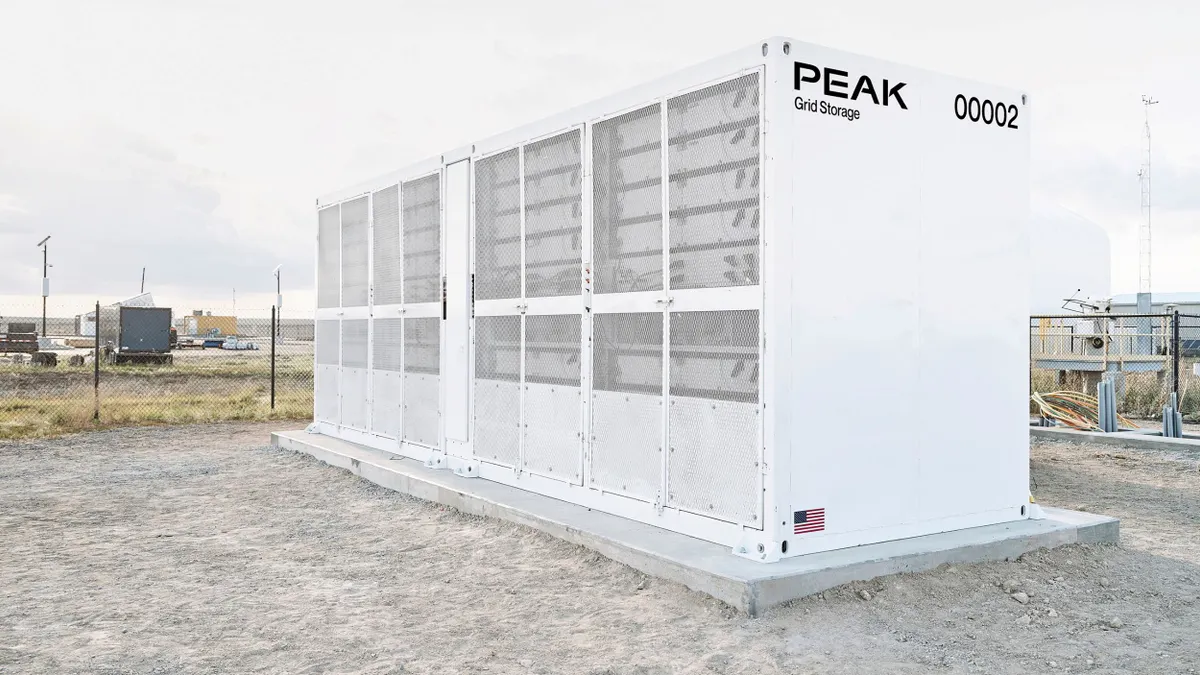Dive Brief
- The Federal Energy Regulatory Commission should “think very hard” before it approves any proposal — like one pending in the PJM Interconnection — that would change which resources can set prices in wholesale energy markets, FERC Commissioner Cheryl LaFleur told a federal advisory group on Wednesday.
- LaFleur told the Department of Energy’s Electricity Advisory Committee that market reform proposals from PJM and other regional grid operators put wholesale markets at a “pivotal point” to either prosper or “wither toward gradual re-regulation.” She said she would continue to push for market redesign to prevent the latter outcome.
- LaFleur’s wide-ranging address also touched on expanding market operations in Western U.S. states and efforts to define grid resilience at FERC. The western market expansion, LaFleur said, could “change the way we think about markets.”
Dive Insight
LaFleur on Wednesday became the third commissioner this month to issue a warning about pending market changes at regional grid operators.
At the DOE’s annual meeting of its Electricity Advisory Committee, the federal commissioner said that PJM’s energy market repricing proposal — now pending with stakeholders — could change the fundamentals of wholesale energy markets.
Currently, real-time energy markets operate by allowing the next resource that can respond to a pricing signal set the locational marginal price (LMP) of electricity, LaFleur noted. The PJM proposal would alter that construct, allowing inflexible coal and nuclear units to set the LMP, raising energy market prices between 2% and 5% by the grid operator’s estimate.
“I think it's something we're going to have to think very hard about because this is the fundamental energy market and how we price things,” LaFleur said. “I don’t think it's something that we should change lightly but should we get a proposal from PJM we'll obviously give it serious thought.”
PJM’s energy market proposal is not its only plan giving federal regulators pause. Last week, Commissioner Robert Powelson warned that any proposal to reform its capacity market would not receive his support at FERC without input from states, which are largely opposed a proposal from the grid operator’s staff to set up a two-part capacity auction.
In a rare move, PJM later in the week gave notice it would file two proposals at FERC — the staff’s plan and an alternative from the independent market monitor — asking federal regulators to help it choose a policy direction.
LaFleur acknowledged that move was unusual, having only been tried by ISO-New England before. She said regulators expect PJM's filings in the coming weeks and that she appreciates the grid operator "giving us different ideas to work with” when market participants cannot agree.
“Our life would be easier if things would come in and the RTOs said ‘This got a 95% vote at the stakeholder meeting and everyone loves it’ … but that’s rarely the case,” LaFleur told reporters after the meeting. “What they said is they need some policy guidance from the commission and then they'll do the final design work, so it'll be on us.”
Other regulators are concerned about how grid operators may respond to FERC’s grid resilience docket, set up last month when regulators rejected a DOE proposal to prop up uneconomic coal and nuclear generators. Last week, Commissioner Richard Glick said RTOs and ISOs could use the docket “as an opportunity where they may otherwise pursue a filing under the Federal Power Act under Section 205 or 206.”
LaFleur said a more common understanding of the facets of resilience — a key question FERC asked grid operators to evaluate in their filings — could prevent any operator from slipping in pricing reforms that do not relate to the subject.
“I hope we wouldn’t accidentally approve anything we didn’t know was changing pricing without being aware of that,” she said. “I do think that I am a little worried that resilience should have a definition and it should mean something and not just have this be the docket that swallows everything FERC is doing.”
LaFleur also touched on the expansion of energy market operations in the Western U.S., noting the Mountain West Transmission Group’s move to join SPP last year and upheavals among reliability coordinators as the California ISO’s Energy Imbalance Market expands.
Potentially, that means FERC will need to “figure out how to do all the situational awareness in the West with multiple reliability coordinators,” LaFleur said, as it does today in the Eastern Interconnect. But the commission will not aim to design the evolving Western electricity markets itself, she added, which could give rise to new market models in the coming years.
“Companies are saying there are benefits for our customers that we didn’t see it before,” LaFleur said. “Now we're using a different setup and now we’re going to design this our way, and it really could change the way we think about markets.”
Correction: This post has been updated to reflect that PJM has not yet filed its two capacity repricing proposals at FERC.













